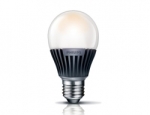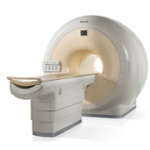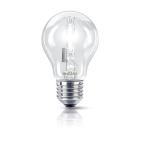Filed under: Best Practices in The Netherlands | Tags: Eco-Design, Eneco, Green Focal Areas, Green Product Development, Healthcare, High Tech Campus, ING Wholesale, Lifestyle, Lighting, Luz Verde, Philips, World Green Business Council
Henk de Bruin, Senior VP Global Head of Sustainability at Philips
Royal Philips Electronics, headquartered in The Netherlands, employs 118,000 employees spread over 60 countries worldwide, generating an annual turnover of 26 billion (2008). The company is offering products and services in healthcare, lifestyle and lighting (1).
Product Examples : (1) Philips Healthcare : ‘Ambient Experience’ : an environment with diagnostic instruments (like MRI scans) and lights that generate a welcoming and comforting hospital environment ; (2) Philips Lifestyle (Consumer Products) : a digital photoframe and DirectLife, an instrument to measure the daily fysical activities and (3) Philips Lighting : Master LED light, 25.000 hours lifespan, designed to replace conventional 25 or 40 Watt lights bulbs.
‘Corporate Responsible Behaviour is a business opportunity to Philips’, says Henk de Bruin, Head of the Corporate Sustainability Departmentat Philips, located in The Netherlands. ‘If we manage Sustainability well, we will generate new business and revenues’.
De Bruin explains the role of Sustainability at Philips, how the company has developed its Sustainability policies over the years and how it has become an internal driving force of Green Product Development and Innovation.
The Philips Board of Management started a Corporate Environmental & Energy department in the seventies, following the report of Rome (1972). The departments first objectives were to overview the companies industrial processes and reduce their ecological impact by reeucing energy consumption, waste, water usage and emissions. Henk de Bruin took over the position of Head of the Philips Corporate Environmental & Energy Department in 1993, which was transformed to the the current Sustainability department in 2001. Philips CEO’s Timmer (1990 – 1996), Boonstra (1996-2001) and Kleisterlee (as of 2001) have been proven to be strong supporters of Philips Sustainability Policies.
1. What are Corporate Responsibility Objectives of Philips ?
The Sustainability Activities of Philips have diversified since the seventies : After an initial focus on industrial processes, Philips started in 1994 with four-year action programs of Corporate Responsibility with measurable targets (2). Eco-Design Procedures were introduced to all Divisions in 1994 and extended in 1998 with a company roadmap for structured green product development. As of 1999 Philips produced it first Environmental annual report, broadened the scope towards a Sustainability report in 2002 which has been integrated in the companies Annual Report since 2008.
Philips Board of Management has chosen its specific Sustainability objectives, prepared by the Corporate Sustainability Office (CSO, 6 FTE) in cooperation with the Business Sectors (Healthcare, Lighting, Consumer Lifestyle)counterparts. The CSO team is closely in contact with other industrial sustainability front-running companies, the academic worlds, NGOs, government, investors and consumer organizations..
Sustainability has been defined as an important condition for successful business at Philips. Notably in the areas ‘Energy Efficiency’ and ‘Healthcare’ Philips want to maintain its front running position. The Sustainability Plans EcoVision III (scope 2006- 2009) and EcoVision IV (scope 2007- 2012 have further detailed out the companies Sustainability goals. Bottom line : Philips aims to improve the environmental impact of its processes andits products.
The Key CR and Sustainability Goals of Philips :
- 25% energy efficiency impovement by 2012 (compared to 2007)
- 25% carbon footprint reduction by 2012 (compared to 2007)
- 30% of Philips Product Sales to be generated by ‘Green Products’ (*) by 2012
- Double investments in Green Innovations (underlying technologies) up to 1 billion euros.(compared to 2007)
* The six Philips Green Focal Areas for Green Products : Energy Efficiency, Packaging, Hazardous Substances, Weight, Recycling & Disposal, Lifetime Reliability. ‘Green products’ have a 10% higher environmental performance in one or more of the ‘Green Focal Areas’ then the reference product (a predecessor-Philips product or competitor product).
Sustainability Goals translated into personal target. The Sustainability objectives are embedded in Philips standard procedures and as such integral part of the managers yearly appraisals, where relevant..
2. How does CSR contribute to Innovation ?
De Bruin distinguishes different areas to drive Sustainable Innovation: (1) Structured green product development, (2) Employee engagement, (3) Livable cities, energy consumption reduction and safety improvement in city areas, (4) Cooperation with NGO’s (5) New business model development and (6) Open innovation.
1. Green Product Development. Procedures for Green Product Development have been implemented in all Philips Divisions supported by internally provided EcoDesign tools. To develop its methodologies for Eco-Design, Philips cooperates with academics, for instance with the University of Technology in Delft, faculty of Industrial Design Engineering. Over 2008, the level of Green Sales was almost 23% of Philips total revenues, with an expected trend upwards for the year 2009. Examples of Green Product Innovations at Philips Healthcare, Philips Lifestyle and Philips Lighting :
Philips Health Green Product Development Example : MRCI scan Achieva 1.5T offers a 28% energy reduction and a life cycle assessment improvement of 10% compared to its predecessor. By applying smart power management, amplifier and cooling technology and specific software only energy is consumed when really needed.
Philips Lifestyle Green Product Development Example : Philips Green Kettle, launched in the UK, is designed to ‘Boil what you Need’ and clearly showing how much water is being boiled, preventing full kettles to be boiled wasting energy. Energy consumption savings are estimated up to 66%.
Philips Lighting examples of Green Product Development : (1) Freezer Lighting, implemented in 1100 UK shops at Tesco and Sainsbury, creates 75% energy efficiency with a strong resistance to extreme temperature condition, improving longevity and reliability of freezer displays (3) ; (2) Based on Eco-Design principles, Philips has refurbished the Pont de la Buillotiere in Lyon with new lamps and gears, resulting in energy efficiency savings of almost 50%. Photocredits : Panoramio.com. ; (3) Generali Office Lighting: the first office entirely lighted with LED lights of Philips Lighting was the Generali Office at the Champs Elysees in Paris, creating a very pleasant atmosphere with lights with maintenance costs because of the very long lifetime of LEDs.
2. Employee engagement. ‘Employee Engagement’ is a key success factor for Sustainable Business development, according to de Bruin. Three questions of the Annual Philips Employee Engagement Survey are related to Philips Sustainability Implementation and Ambitions. De Bruin is happy to announce that the majority of the Philips employees support Philips Sustainability ambitions.
3. Cooperation with NGO’s. Philips wants to play a role in the developing countries by providing energy efficiency solutions. Cooperation with international governmental organisations and NGOs is important to Philips, to have continuous feedback – and avoids media conflicts, as well as offers access to knowledge about ‘Base of Pyramid’ solutions in developing countries. Lastly, NGO’s could become Philips business partner. An example of a project inspired by cooperation with NGO’s is the ‘Woodstove ’pilot project of Philips Research. The Woodstove has beentested in India, (4) and was commercially rolled out in the Indian market in the last quarter of 2009 :
Philips Woodstove Pilot in India : The Woodstove is using traditional coal or wood and contains a fan with rechargeable battery that circulates air. Cooking conditions are improved significantly : higher cooking temperature, shorter cooking time and an energy efficiency reduction of 50%.
4. Livable cities: Partnerships to reduce energy use in city areas and improve safety. Philips has recently joined the World Green Building Council (WGB) joining other multinationals to discuss Energy Efficient Building Solutions. Philips has identified cities as major energy consumer (70% of global energy consumption). Over 60% of all lightning installed in the EU is based on legacy and old technology. The changeover rate to new lighting technologies (as Philips it calles ‘the Green Switch) is unfortunately very slow : street lights only 3% per year, office light 7% per year. By joining the WGB Philips wants to accelerate this switch, notably by actively promoting renovation of existing infrastructure (like office and city lighting). Philips believes that with existing new technologies, better isolation and new (LED) street lights energy efficiency savings of over 60% could be achieved in cities (4).
5. New Business models. Philips is developingnew business models and partnerships to achieve its Sustainable goals. One example is ‘leasing’ services to enable customers to using a certain functionality without buying equipment. Another very specific example is the partnership business model of the Luz Verde project (5). The project is part of the UN program Clean Development Mechanism that allow companies in industrialised nations to finance emission reduction in developing countries. In other words : Saved carbon in developing countries can be traded as carbon credits to governments and industries in developed world. In this first Luz Verde project in Mexico, Philips is providing million energy efficient lightning bulbs (Compact Fluorescent Light Lamps), Eneco Energy Trade BV is taking care of the trade of the carbon credits. ING wholesale is funding the project.
Luz Verde project in Mexico City : Lighting up thousands of private houses ; Philips is providing CFL light bulbs, ING Wholebank is funding and Eneco Trading is taking care of the carbon credits trade. Photo credits Mexico city : www.destination360.com
6.Open innovation. De Bruin explains that Philips Research activities has evolved from internally oriented to a party that cooperates intensively with parties in the outside world. For instance, Philips works with DSM on special material innovation projects, it welcomes start-ups at its High Tech Campus campus in Eindhoven and it has created open spaces at its Research Institute Philips Natlab.
3. Does the economic crisis impacts Sustainability Policies ?
The combination of the ecologic and financial crises has clearly raised the attention on Sustainable issues. Governments create more severe laws to reduce environmental footprint. International public bodies will continue to claim attention for Sustainability. And customers request sustainable products that save energy costs and reduce their environmental footprint, adds De Bruin, based on Philips Market Research. This need is most present in Business to Business market, but has been also recognized in the Business to Consumer market. Philips choice to invest strongly in Green Products has proven to be the right direction.
4. What are trends and outlooks ?
The need for Sustainable Products will only raise. Despite the financial crisis, Philips green product sales is raising steadily (15% of total sales generated by Green Products in 2006 has increased to 22,6% in 2008).
Open Innovation, cooperation with industry and NGO partners as well as employee involvement will remain key priorities to Philips to be successful in developing and selling Green Products. Next to that, closing material loops by using more recycled materials for new products and enhance collection and recycling, for instance via new business models is another trend on the Philips agenda.
Photocredits, if not mentioned otherwise : Philips Corporate Communication. Sources : 1. www.philips.com; 2. Philips Annual Report 2008 ; 3. Sustainability product proof points 2008/2009, 4. http://www.appliancemagazine.com 5. www.newscetner.philips.com.
2 Comments so far
Leave a comment


















Regarding Philips woodstove, perfomance can be maximised if wood is used, not if caol os used as mentionned.
Comment by Mancheron May 31, 2010 @ 11:22 amRegards
Helene
[…] Promising practices are eco-innovation initiative es at DSM (similar to the criteria set by Philips for its respective industries), a financial stimulus for top managers when achieved sustainability […]
Pingback by Beyond CSR reporting : How to measure the social and environmental impact of CSR strategies ? « Sustainable Innovation September 14, 2010 @ 2:38 pm